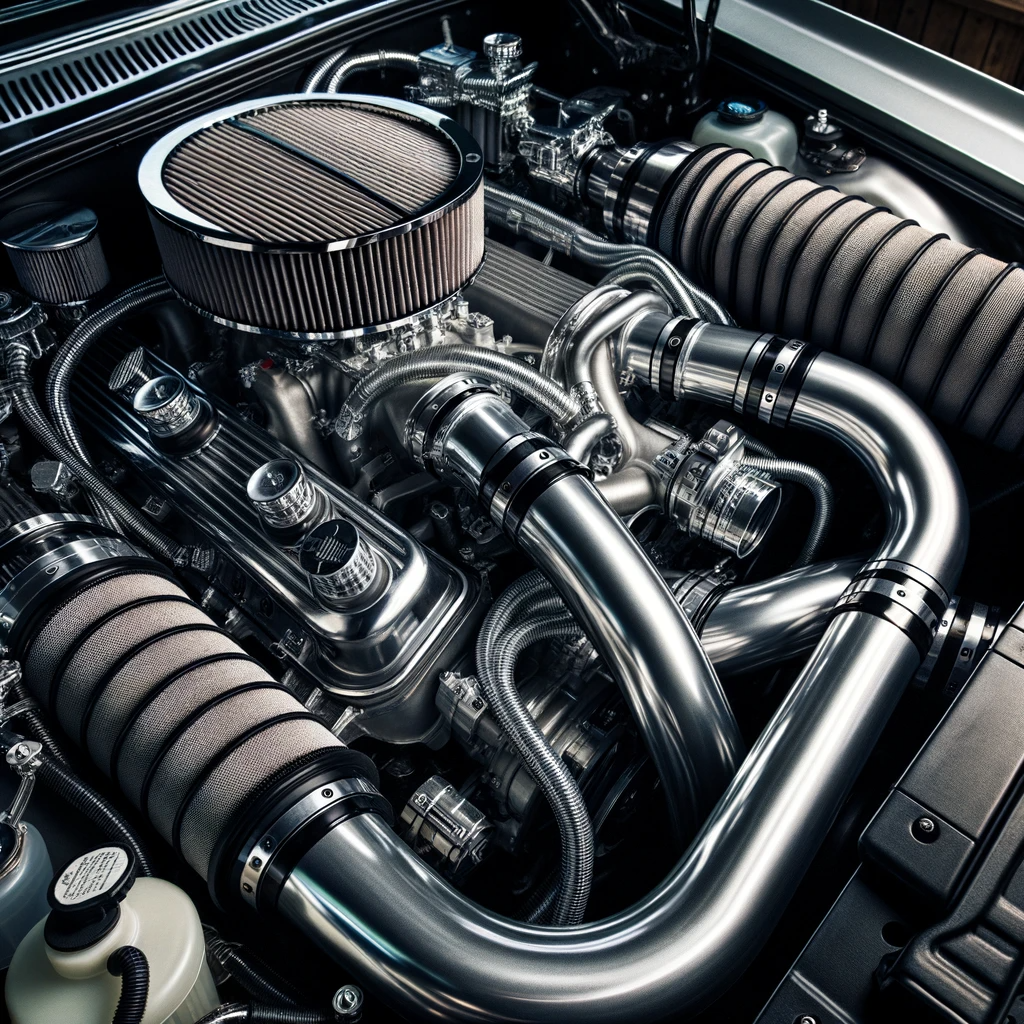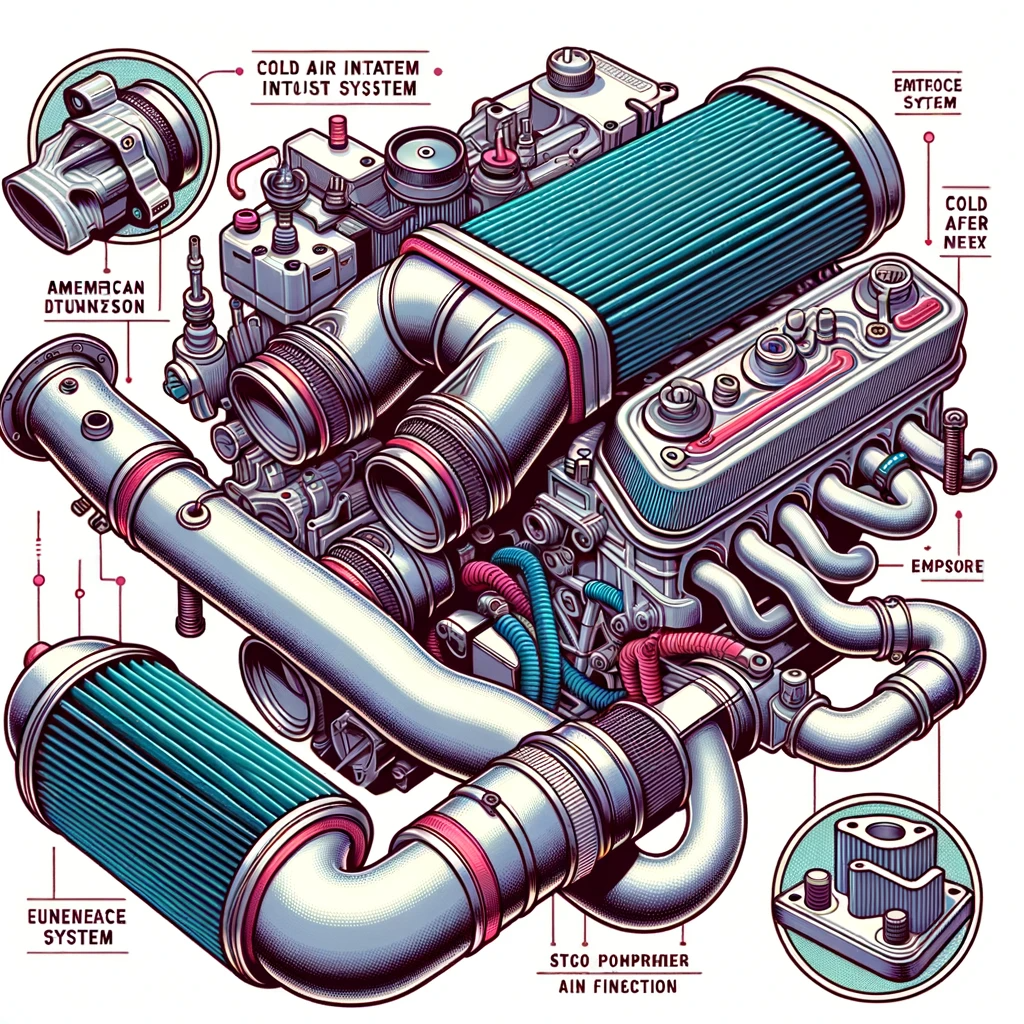Cold air intakes (CAIs) are popular aftermarket upgrades among car enthusiasts, known for their ability to enhance engine performance by allowing cooler air into the engine. However, there’s a common belief within some circles that CAIs might negatively impact the transmission system of vehicles. In this article, we delve into the mechanics of cold air intakes and their alleged impact on transmission performance, aiming to separate facts from myths. We will discover cold air intake transmission problems!
Key Takeaway:
Cold air intakes are engineered to boost engine performance, yet concerns loom over their potential effect on transmission systems. This article aims to explore the validity of these concerns.
Understanding Cold Air Intakes

Cold air intakes work by replacing the stock intake system with a more direct and less restrictive path for cooler outside air to reach the engine. Cooler air is denser and contains more oxygen, which can lead to better combustion and, consequently, better engine performance. We’ll explore how different vehicle models react to cold air intakes and whether the type of vehicle influences the supposed transmission issues.
- Best cold air intake Ram 1500 5.7 Hemi: Explore how the Ram 1500 5.7 Hemi benefits from a cold air intake.
- Cold Air Intake For 6.0 Vortec: Discover the impact of a cold air intake on the 6.0 Vortec engine.
The performance of transmission fluid is crucial for the seamless operation of the transmission system. Its primary functions include lubricating moving parts, cleaning, cooling, and also acting as a hydraulic fluid to transfer power from the engine to the transmission. The temperature of the transmission fluid can significantly affect its viscosity and, consequently, its performance.
- List of factors affecting transmission fluid temperature:
- Ambient Temperature
- Driving Conditions
- Engine Performance
- Aftermarket Modifications such as Cold Air Intakes
In the following section, we’ll delve deeper into claims surrounding cold air intakes potentially causing the thickening of transmission fluid and subsequent transmission issues.
Cold Air Intakes and Transmission Fluid Dynamics
Continuing from where we left off, the claims surrounding cold air intakes allege that they can cause the transmission fluid to thicken, especially in colder climates, which may lead to transmission problems over time. However, the evidence to substantiate these claims is not very strong, and many experts argue that cold air intakes are unlikely to have a significant impact on transmission fluid dynamics.
Key Takeaway:
Despite the claims, the evidence regarding cold air intakes causing transmission problems is not conclusive. Further studies and real-world testing are necessary to draw a definitive conclusion.
Expert Opinions and Studies
Various automotive experts and studies have explored the impact of cold air intakes on transmission performance. The consensus is not clear-cut, and opinions vary. While some experts argue that cold air intakes could potentially cause transmission issues if not installed correctly or used with certain types of transmissions, others disagree.
- Examination of notable studies and expert opinions on the matter.
- Discussion on the types of transmissions that might be more susceptible to problems when using cold air intakes.
- Guides Archives: A resource for readers to delve deeper into automotive performance topics and expert opinions.
Preventive Measures and Best Practices
Ensuring that your vehicle operates seamlessly requires adopting certain preventive measures and best practices, especially when modifying your vehicle with aftermarket parts like cold air intakes. Proper installation is crucial to prevent any unintended consequences.
- Ordered List of preventive measures:
- Ensuring proper installation of the cold air intake system.
- Regular maintenance and check-ups.
- Consulting with automotive experts before making significant modifications.
- Understanding the compatibility of aftermarket parts with your vehicle model.
In the next section, we will continue discussing preventive measures and explore further on how to safeguard your transmission performance while enjoying the benefits of a cold air intake system.
In this part of the outline, the discussion progresses from the mechanics of transmission fluid dynamics to expert opinions, and begins touching on preventive measures. It provides a balanced view of the topic, emphasizing the lack of conclusive evidence regarding the alleged transmission issues caused by cold air intakes. The internal link to the Guides Archive provides a resource for readers seeking more in-depth information on automotive performance topics.
Preventive Measures and Best Practices

Continuing with our discussion on preventive measures, it’s essential to understand that every vehicle is unique, and what works well for one car might not be suitable for another. Besides proper installation and regular maintenance, being informed about your vehicle’s specific needs and compatibility with aftermarket parts like cold air intakes is crucial.
- Best Cold Air Intake For Honda Civic1: For Honda Civic owners looking to upgrade their vehicle’s intake system, this guide provides insight into selecting a compatible cold air intake.
Conclusion about cold air intake transmission problems
The relationship between cold air intakes and transmission performance is a complex one, with varying opinions among experts. While some claims suggest a potential negative impact on the transmission, others argue that cold air intakes can actually contribute to better engine efficiency, which in turn, may benefit the transmission.
Key Takeaway:
The narrative surrounding cold air intakes and transmission performance is nuanced and may vary from vehicle to vehicle. Proper installation and maintenance, along with a good understanding of your vehicle’s specific needs, are crucial for preventing potential issues.